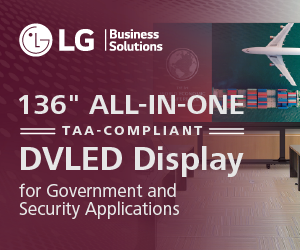An Emerging World of Outdoor Displays in Commercial Applications
I’ve noticed over the last year the increasing use of outdoor displays in commercial applications. Once regulated to residential porches and light commercial use (such as a sports bar’s outdoor covered patio), manufacturers are now producing displays that eliminate the need for environmental enclosures and kiosks.
Today, properly specified displays provide many benefits compared to the traditional panel within an enclosure or kiosk. Some of those benefits include but are not limited to:
- Weatherproof operation at a considerable lower cost without expensive environmental enclosures & kiosks
- Better picture due to no gap between the screen and an outer enclosure glass that may hinder picture quality
- Overall reduction in physical size and weight for the application
- Simpler mounting and installation
- Ease of on-going maintenance
But how does a design engineer specify the right outdoor panel for a particular environmental application? It’s relatively simple – match the properly-rated display to the outdoor demands of the application. First, assess the application environmental demands:
- Environmental temperature extremes.
- Dust & water extremes (both type of dust and at what angles they can attack a panel).
- Under cover or in direct sunlight.
- Maintenance access (e.g., mounted high, extremely restricted location, etc.).
- Exposure to glass-breaking projectiles like rocks and such.
Now, match the display to the environmental demands of the application.
- Temperature Extremes: Coldest and warmest extremes a display can safely operate.
- Dust and Moisture: Determine a display’s rating using either a NEMA Enclosure Rating (relative dust & particle resistance measurement) or the more popular “IP’ Rating (Ingress Protection as defined by DIN EN 60529). An IP rating indicates the external conditions enclosures can withstand. It describes a display’s scope of protection during use when exposed to temperatures, fuel and oil and their fumes, chemical clouds, acid based moisture and dust entering the display. For example, the “I” in IP has a scale of 1 to 6 that defines the protection against contact and ingress of dust. The “P” has a scale of 0 to 9k that defines ingress of moisture from water droplets to high pressure steam cleaning.
- Indirect or Direct Sunlight: If direct sunlight is a factor, consider a panel with UV optical bonding that can eliminate reflection & refraction glare so it can be easily seen in direct sunlight. Note that simply being a high brightness panel (1500+ nits) doesn’t necessarily translate to good picture in direct sunlight. It’s hard to out bright the sun!
- Impact Resistant: Determine if the display needs to be protected from impacts. And should the screen be broken, make sure it is shatter proof to protect nearby viewers and property.
- Maintenance: Some displays will be mounted high or in difficult to reach places. The less maintenance of filters and the ability to be hosed-off or pressure washed can be key.
Almo ProAV partners with Peerless-AV to offer a family of outdoor displays starting with the IP55-rated UltraView Series up to the IP68-rated Xtreme series. We can match the right display for the environmental demands of temperatures, dust & moisture, direct sunlight, impact resistance, and ease of maintenance. Also, we will assist in pairing the proper outdoor, wind-rated mount. Feel free to contact me or your Almo ProAV Account Rep. We’ll be happy to assist you in specifying the right display for your outdoor application.







